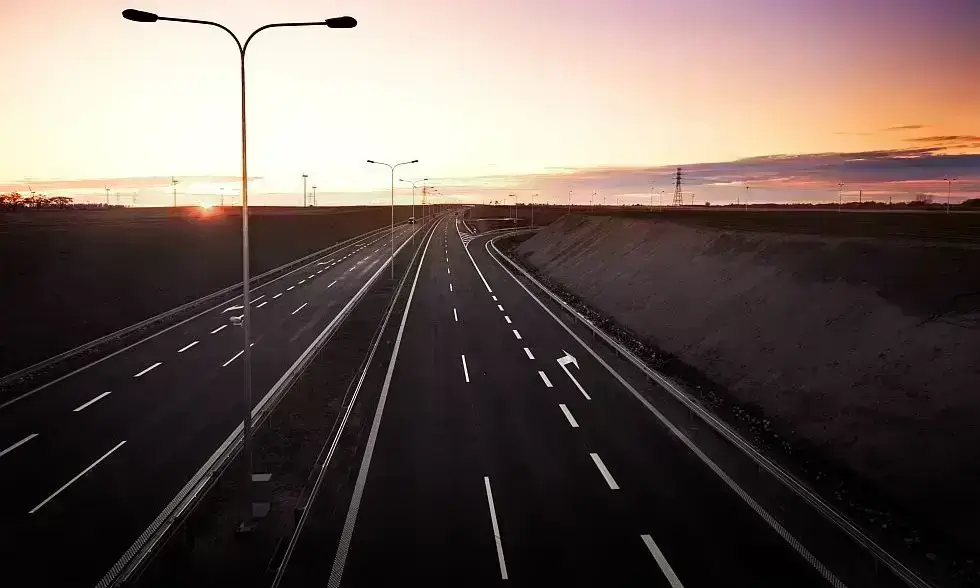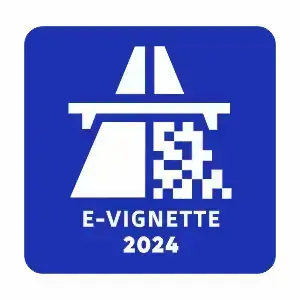Motorway vignette is obliged to use Hungarian highways and expressways. The toll must be redeemed in the form of an electronic motorway vignette, in any case, before entering the highway. The stickers are checked with stable cameras or mobile inspection cameras. The length of the toll road network in this system is approximately 1,400 km.
The traffic center of Hungary is Budapest, as the highways, expressways, and main roads all start from here. Motorways are marked with the letter M and a number next to it. The M designation is equivalent to the fact that only motorized vehicles are allowed to drive on the highways.
M0 motorway: ring connecting motorways around Budapest, surrounding the capital. Its length is 79 km.
- as a load-relieving role, it displaces heavy transit traffic on the passing road from Budapest
- connects the radial national highways, motorways and trunk roads
- expressways and highways function as collector-distributors
- it helps the traffic between the capital's districts and the surrounding settlements
M1 motorway: It is located on the route between Budapest and Austria. It connects Vienna with Budapest and is also a section of the European trade route E60. After Hegyeshalom, it joins the Austrian A4 highway.
M2 motorway: From Budapest it is possible to go directly to Slovakia via Vác. The currently constructed part of the M2 motorway connects Budapest with Vác and is part of the European highway E77. The section between Budapest and Vác-dél has two traffic lanes in each direction.
M3 motorway: Budapest-Miskolc-Nyíregyháza-Ukraine route. The M3 highway connects the northeastern part of the country with Budapest. The M3 currently operates between Budapest and Vásárosnamény, with two traffic lanes and one stop lane in each direction. It is an important branch off the M25 to Eger, the M30 to Miskolc, and the M35 to Debrecen; planned branching of the M49 in the direction of Szatmárnémeti and Nagybánya.
M4 motorway: route Budapest-Szolnok-Romania. The M4 motorway (joining the M35 motorway) between Budapest and the Romanian-Hungarian border in Nagykereki will be built partly parallel to highway 4 and partly parallel to highway 42 Cegléd – Szolnok – Karcag – Püspökladány – Berettyóújfalu – Nagykereki – On the Nagyvárad route, creating a connection with the A3 highway in North Transylvania.
M5 motorway: it passes through the Budapest-Szeged-Serbia route. Its main purpose is to connect Szeged with the Hungarian and Serbian capitals, or rather it connects the two capitals, affecting Szeged as well.
M6 motorway: It runs along the Budapest-Dunaújváros-Pécs-Croatia route. In Hungary, on the right bank of the Danube, it runs in a southerly direction, creating a passage between Budapest and Pécs. Four tunnels were built on the section from Dunaújváros through Szekszárd to Bóly. The road itself starts at Bóly in the direction of Pécs, under the name of the M60 motorway.
M7 motorway: Budapest-Siófok-Croatia: The M7 motorway is Hungary's oldest motorway, which connects Budapest, Lake Balaton and the southwestern Hungarian-Croatian border. The kilometer numbering of the highways starting from Budapest starts from the zero kilometer stone located at the Lánchíd bridgehead in Buda.
The official Hungarian motorway vignette 2024 can be purchased here in the shop.



 Deutsch (DE)
Deutsch (DE)
 Greek (GR)
Greek (GR)
 Italiano (IT)
Italiano (IT)
 Magyar (HU)
Magyar (HU)
 Polski (PL)
Polski (PL)
 Română (RO)
Română (RO)
 Slovensky (SK)
Slovensky (SK)
 Slovenščina (SL)
Slovenščina (SL)
 Türkçe (TR)
Türkçe (TR)
 Česká (CZ)
Česká (CZ)








